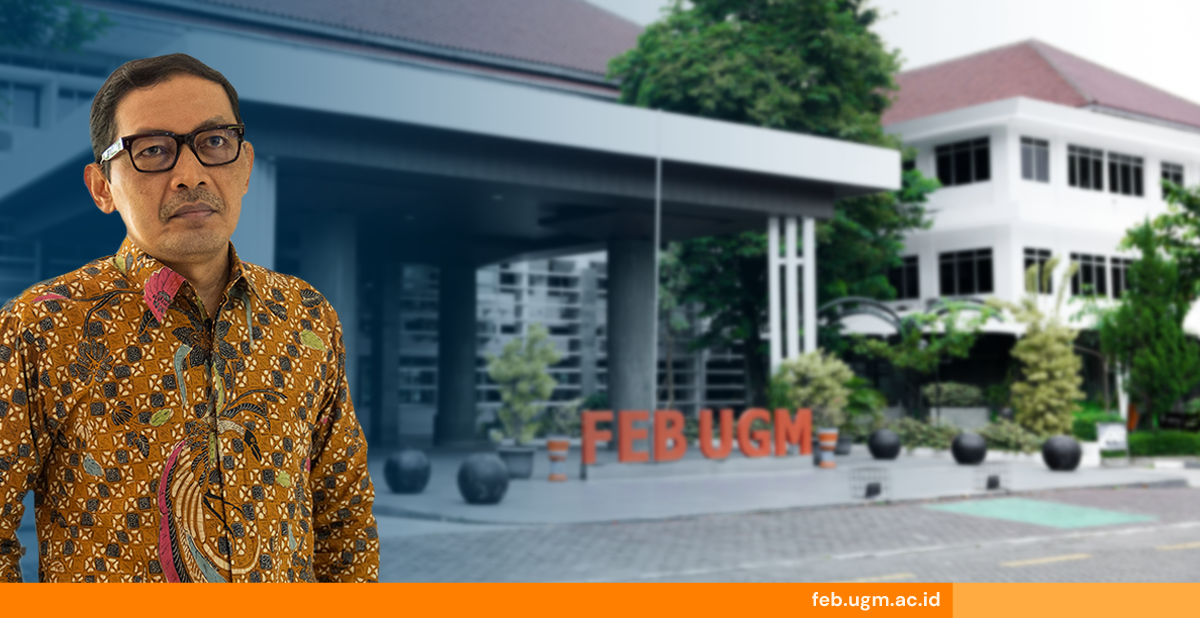
By: Muhammad Edhie Purnawan, Ph.D. Lecturer at the Department of Economics, Faculty of Economics and Business, Gadjah Mada University
Prologue
It is on a stage—where Donald Trump is standing tall—with his usual style of speech: enthusiastic and confident, holding a big hammer that reads “Reciprocal Tariffs,” ready to hit any country that does not agree with his vision.
On April 8, 2025, at an economic workshop in Jakarta, Finance Minister Sri Mulyani Indrawati looked at Trump’s stage with pensive eyes. Then she said, “It’s purely transactional; there is no basis in economics. We have ISEI (Indonesian Economists Association) here; our knowledge nowadays is useless”. It’s as if she’s explaining that the economics we’ve learned over the years has become obsolete, unable to explain Trump’s wild logic—32% tariffs on Indonesian steel, automobiles, textiles, and footwear, and threats of more tariffs, and fierce retaliation from China and Canada.
Pragmatism and realism are said to be driving the world today. Is this the case? Let’s look at it together.
As economists raised by textbooks, numbers, equations, propositions, lemmas, and optimum solutions, we hear this statement with dismay. And why is that? Because perhaps, to some extent, there is a bitter tone of the Finance Minister that we have seen together – she has a very long, undeniable experience in the seat of state finance.
But, if we go back to reading the economics textbook, especially international trade theory, this is pure economics that President Trump is demonstrating.
Let’s reflect momentarily and dissect this game with a sharper and more critical analytical knife with International Trade and Game theory. These two weapons are the opposite of what we heard yesterday.
As economists, we need not explain that Robert C. Feenstra (in his book Advanced International Trade: Theory and Evidence) is a strong proponent of the H-O model and firm heterogeneity (Melitz). H-O explains how tariffs affect resource allocation; Melitz focuses on the effects of firm selection. Thus, the 32% tariff on Indonesian steel protects America’s capital-intensive sector but raises input costs and crowds out small and medium-sized exporters. Trade diversion to other countries is also logical according to the gravity model.
We need not remind ourselves of the Optimal Tariff Argument—where large countries can use tariffs to improve terms of trade even though there is still a risk of retaliation (Avinash Dixit and Victor Norman, The Theory of International Trade). Then, we can also revisit Jagdish Bhagwati in Lectures on International Trade, especially on the Specific Factor Model—tariffs benefit specific sectors but harm the economy as a whole. Bhagwati is anti-protectionist, so a 32% tariff on Indonesia benefits US steel but hurts consumers and other industries.
Also, Peter J. Lloyd (the University of Melbourne, one of our former Ph.D. supervisors) is famous for the Effective Rate of Protection, which more or less (though not equally) explains tariffs that protect domestic value-added, and the effect depends on the industry structure. This tariff will undoubtedly increase the ERP of US steel. Still, if the Indonesian industry is labor intensive, exports will fall due to unabsorbed costs (Dixit and Norman, The Theory of International Trade).
Trump: The Playmaker
A few days ago, it was revealed that Trump is not just a president but a trade chessboard player who dislikes compromise. He hits countries, including Indonesia, with 32% tariffs, uses the trade deficit as a shield, and then moves on without looking back. In Game Theory, this is not random chaos—it is a deliberate non-cooperative game. America under Trump is playing the Stackelberg leader, the leader who makes the first move and forces us—Indonesia, into the follower role. The logic is simple and brutal: “America First” is an absolute victory no matter who falls.
But Trump didn’t stop there. He spices up his strategy with Brinkmanship—walking on the brink while brandishing a flaming torch. The game includes his sudden tariff threats, alarmist tweets, and erratic behavior. He wants the world to see him as a Richard Nixon-style “madman” – someone desperate enough to burn everything, including the country’s economy, to force an opponent to his knees. In Chicken Game terms, Trump is speeding away in a giant truck, hoping that those of us in small cars will pull over in fear.
The Question is: Should We Give Up?
With all due respect, when Sri Mulyani says that economics is “useless these days,” I hear the honesty of a practitioner tired of rigid theory. But economics was never really dead; it’s just waiting for us to open it up in a new way. Trump may be playing by surprise, but Game can be our compass for interacting with him.
But instead of retaliating with reckless tariffs, we sit down at the negotiating table with a Nash Bargaining Strategy. We talk to America and offer something attractive—access to ICT or energy markets, for example—while maintaining a firm stance. This is not a sign of weakness but a strategy to increase the size of the standard trade pie. Build together, not destroy together. Or, if Trump keeps hitting, we retaliate with small but firm steps—limited tariffs on US soybeans or aircraft—as part of the tit-for-tat in the repeated game. We show that Indonesia does not like to make a fuss, but neither does it like to be trampled. At the very least, we want a subgame perfect equilibrium born of measured assertiveness.
Then there is another gap: Trump is not always clear. The USTR document is full of fog, and that’s where we can surf. Delay the harsh response, encourage negotiations, and even go for a zero-for-zero tariff like Europe. In the Bayesian game, we change the perception of America—Indonesia is not prey but a tough and open partner. Economics doesn’t just live here; it’s the life of our strategy.
So, what are our concrete steps? First, turn the export steering wheel. Try to optimize economic diplomacy so that Trump’s policy to Indonesia is lenient. This is the golden door to retaining the American market while, of course, also helping their consumers. Second, don’t do everything alone. Hold ASEAN’s hand, build a trade coalition through TIFA or CPTPP, and make America think twice before hitting harder. Third, play the slippery card: tie tariffs to significant issues like Indo-Pacific security. This isn’t just about trade; it’s about negotiating on the world stage for many interests. Including American interests, we can support.
Epilogue
I look back on Ms. Sri Mulyani’s statement with deep respect. She is right: Trump is bringing the world into the realm of pragmatism that makes classical trade theory seem useless. However, I want to emphasize that economics is not a helpless victim withering away in a corner. It stands ready—like a sword—waiting for us to take it up and strike with purpose.
Trump may act erratically, as a madman, and with Brinkmanship, but Indonesia need not be trapped. With the game as a beacon of light and Classical International Trade Theory as a strong foundation, we can work together with America to be much better, especially coupled with diplomacy based on mutually beneficial, fair, and equal economics. We are a strong country. We understand America. And we are confident that we can work together with our heads held high. Economics is not dead, and it is never useless. It is waiting for us to prove that it is more than assumptions, lemmas, propositions, and proofs—it is the lifeblood of our struggle.
So, the tariff seems to be a political move—which is partially true, but the economic justification is so clear. Finally, we hope that President Prabowo will always be able to encourage us and that the Minister of Finance will not be too exhausted from dealing with the Don so that she will not forget the economics that she has been practicing for a long time.
*Has been published on infobanknews.com
Sustainable Development Goals









